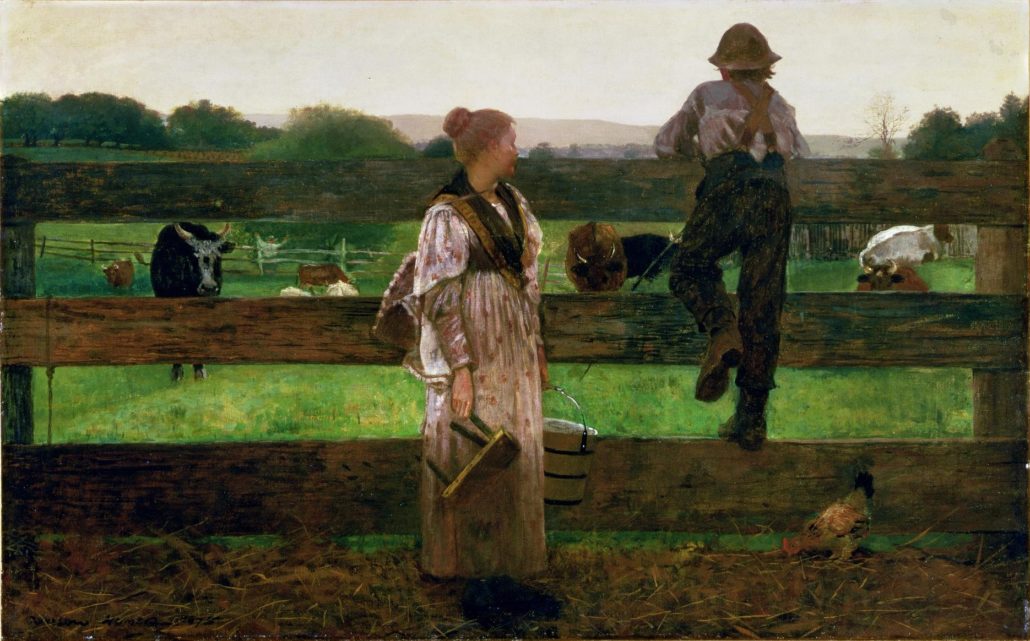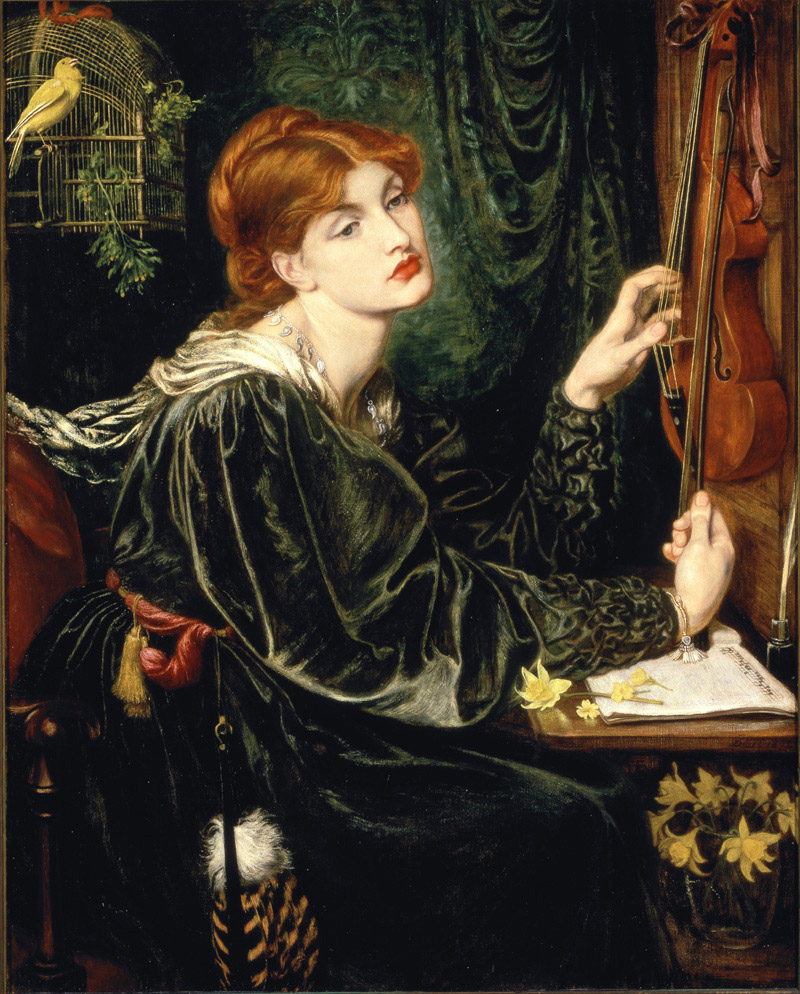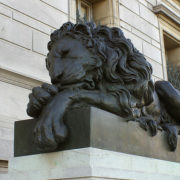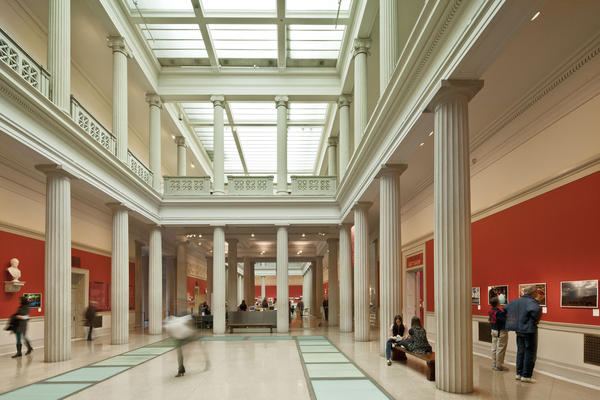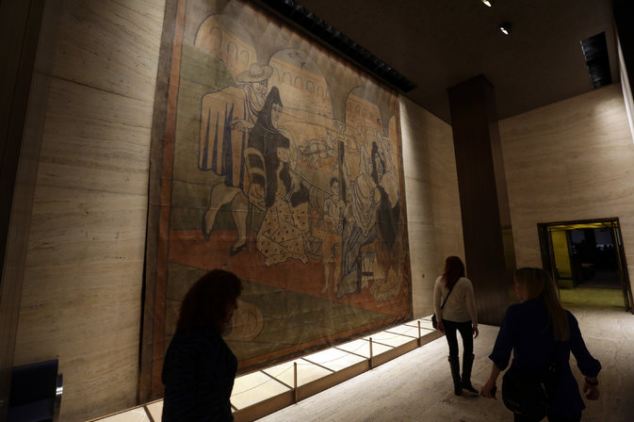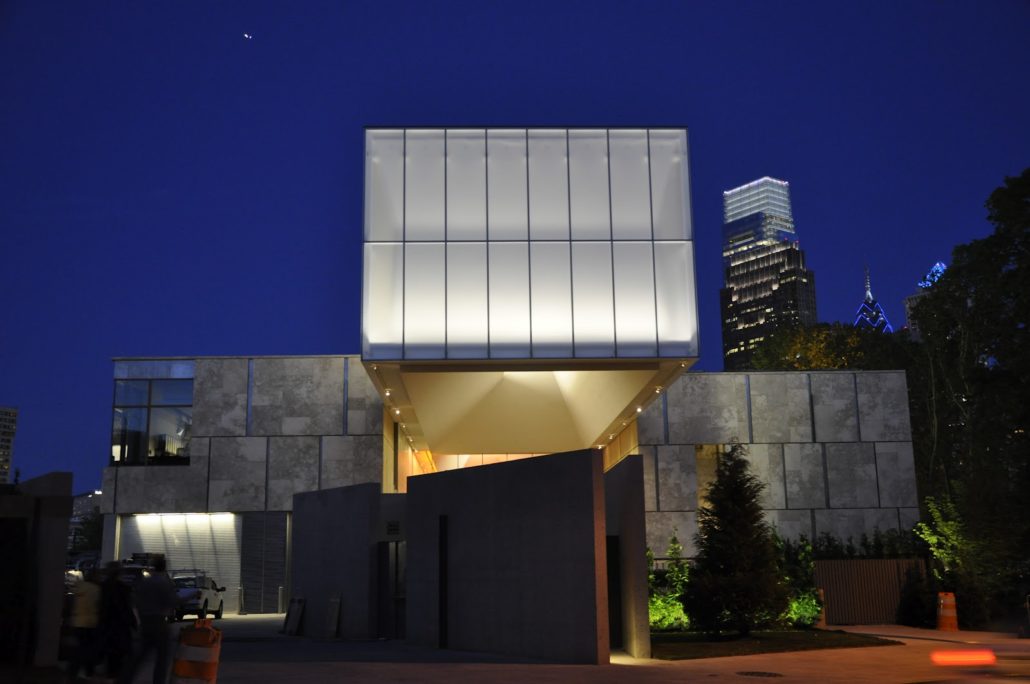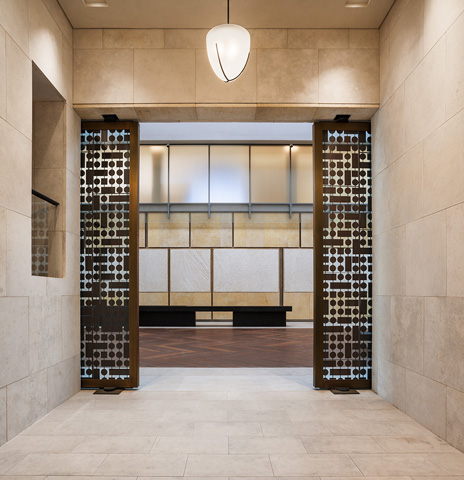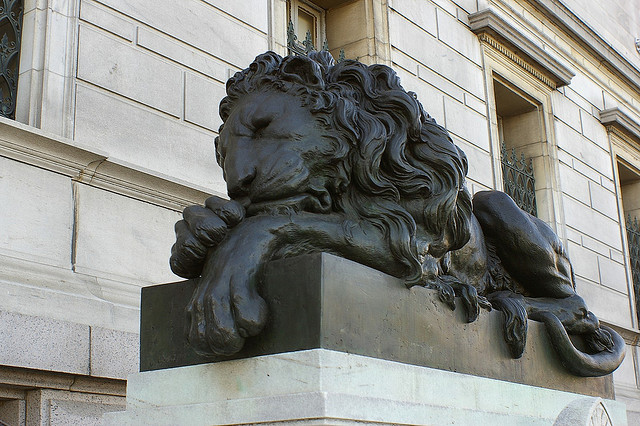Delaware Art Museum Deaccession Update: W.H. Hunt Painting to be Sold at Auction
Ruth Osborne
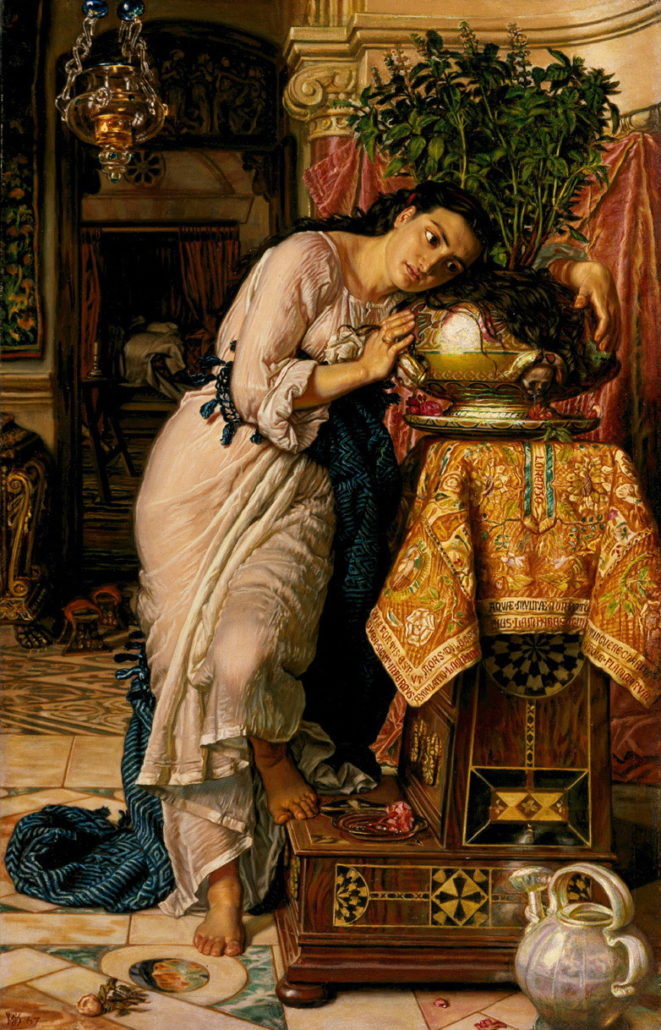
William Holman Hunt, Isabella and the Pot of Basil, 1868. Former Collection of the Delaware Art Museum.
The latest update in the story of the Delaware Art Museum’s deaccessions is a quite unfortunate one. It was announced last week that an item from their prominent collection of Pre-Raphaelite paintings would be one of the four sold at auction.
William Holman Hunt’s Isabella and the Pot of Basil (1868) is to be sent off to Christie’s in London for their June 17th auction[1], whilst the Board sits back and waits for the proceeds to roll in.
London’s The Daily Telegraph announced just a few days ago that this item from the Delaware collection was expected at Christie’s. The record to date is $1.8 million for a Hunt painting, set in 1994 by the Manchester Art Gallery.[2] The painting now in question features Hunt’s wife Fanny as the model in a scene from a poem by English Romantic poet John Keats. Here, Hunt captures the moment of the lovelorn Isabella covering herself over a potted basil plant, in which she has buried the ashes of her lover Lorenzo. Hunt had begun the work while the couple were in Italy, but completed it after her death. It thus stands as a memorial portrait of the artist’s wife, certainly not insignificant to the study of his oeuvre.
The Delaware News Journal has reported on strong criticism from Mark Samuels Lesner, a senior research fellow in late nineteenth-century art history and literature at the University of Delaware, Mark Samuels Lesner. He has used the words “sacrilege” and “extraordinarily significant” to describe the painting and its upcoming sale. CEO Mike Miller, however, reportedly claimed it is “no more important than any others,” and was thus chosen for sale “because of its limited impact on the overall collection.”[3]
Contradicting Miller’s assertion is the emphasis placed on another Pre-Raphaelite painting coming up at auction May 22 at Sotheby’s in London, Dante Gabriele Rosetti’s Pandora (1871). It has been promoted as the highlight of the sale, with a feature video and article on Sotheby’s website and an expected hammer price of £5-7 million ($8.4-11.7 million).[4] Also of note is the major exhibition at the Metropolitan Museum of Art opening this month, “The Pre-Raphaelite Legacy” (May 20-Oct. 26, 2014). This renewed attention to Hunt, Rosetti, and others from the group is sure to have a certain amount of impact on raising the sale price. Quite advantageous for Miller and the rest of the Board, no?
Another argument for the sale of contemporary works from Delaware’s collection has also been made by the above-mentioned Lesner. Skewed as his opinion may be towards nineteenth-century works, he does have a point. Works from late twentieth-century artists like Richard Cleaver and Chul Hyun Ahn are not the pieces that formed the foundation of the Museum’s collection and have less connection with the institution’s history. He has made sure to point out that Pre-Raphaelite works like Hunt’s, as well as those by the Brandywine River School of American illustrators, stand at its “core, the reason for the institution’s very existence.”[5] If the Delaware Art Museum is to promote itself proudly for its founding collection, as it has for the past century, should it not respect the integrity of that collection?
Independent arts journalist Judith Dobrzynski has remarked upon the difficulty of museums selling contemporary works that carry less weight in the realm of arts scholarship:
“Most museum directors I’ve discussed this with won’t go there. Some would like to sell contemporary art works they feel will not stand the test of time. But there are two problems: they don’t want to offend living artists — not only the ones whose works would be sold, but also others who might take offense at the practice. Second, they’re afraid that the works aren’t worth much — and that their sale would be a signal of an artist’s insignificance, depressing prices even more.”[6]
ArtWatch’s concern is that the steps now being taken by the Delaware Art Museum’s Board of Trustees confirms yet another added to the list of those who have compromised the integrity of their collection, and thereby their institutional history, in the face of financial crisis. As Stephen Salisbury at The Philadelphia Inquirer writes, Delaware has now fallen into the very same fate as others in the mid-Atlantic region. Former head of the Barnes Foundation, Derek Gillman, further prods the issue, as the Delaware Art Museum was founded as a collecting institution and the proceeds from these sales will not go, as the AAM regulates, back into the collections budget: “They’ve broken the rules…Their issue is, ‘OK, we accept that there will be costs to the museum.’ ” [7] There is a danger to this sudden disconnect between institutions and the works of art held on their walls for decades. Art is becoming increasingly commodified as a financial asset. What risk does this pose to the future of cultural stewardship?
*UPDATE* Monday June 9, 2014
From a member of ArtWatchUK comes an interesting remark on the expected valuation of the painting by Miller and the rest of the Delaware Art Museum Board:
“…it seems to have been overlooked that the full-size finished oil painting of this subject is in the Laing Art Gallery in Newcastle-upon-Tyne. The Delaware painting is only a later version, one third of the size of the original and begun by someone else; and only finished off by Holman Hunt. I believe the Delaware trustees are expecting somewhere in the region of five million pounds for the painting: but for the reasons given above, I can’t see it happening. But I do hope the painting will be described in the catalogue and offered for sale for what it really is.”
Alan Halliday, Ph.D. (Oxford)
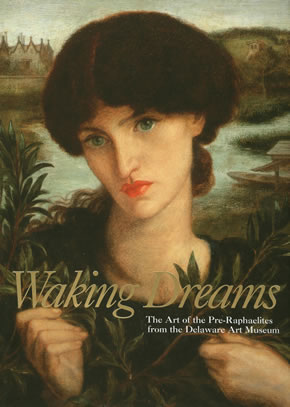
Delaware Art Museum catalogue from 2004 exhibition “Waking Dreams.”
[1] Delaware Art Museum. Press Release: Q&A. 6 May 2014. http://www.delart.org/wordpress/wp-content/uploads/2013/11/dam_qa_may2014.pdf (last accessed 13 May 2014).
[2] “Market News,” The Daily Telegraph. 13 May 2014.
[3] Margie Fishman, “Delaware Museum to Auction Iconic Painting,” The News Journal. Delaware Online. 6 May 2014. http://www.delawareonline.com/story/news/local/2014/05/06/delaware-art-museum-sell-pre-raphaelite-painting/8760189/ (last accessed 13 May 2014).
[4] “Sotheby’s to sell Dante Gabriel Rossetti’s Pandora; Last seen at auction 50 years ago,” ArtDaily. 11 March 2014. http://artdaily.com/news/68674/Sotheby-s-to-sell-Dante-Gabriel-Rossetti-s-Pandora–Last-seen-at-auction-50-years-ago (last accessed 15 May 2014).
[5] Fishman.
[6] Judith H. Dobrzynski, “Keep The Pre-Raphaelite, Sell Contemporary Art, Expert Says,” Real Clear Arts: Judith H. Dobrzynski on Culture. 11 May 2014. http://www.artsjournal.com/realcleararts/2014/05/keep-the-pre-raphaelite-sell-contemporary-art-expert-says.html (last accessed 14 May 2014).
[7] Stephen Salisbury, “When Institutions Sell Artwork to Raise Funds,” The Philadelphia Inquirer. Philly.com. 12 May 2014. http://articles.philly.com/2014-05-12/news/49773584_1_eakins-portraits-archbishop-james-frederick-wood-art-market (last accessed 13 May 2014).




